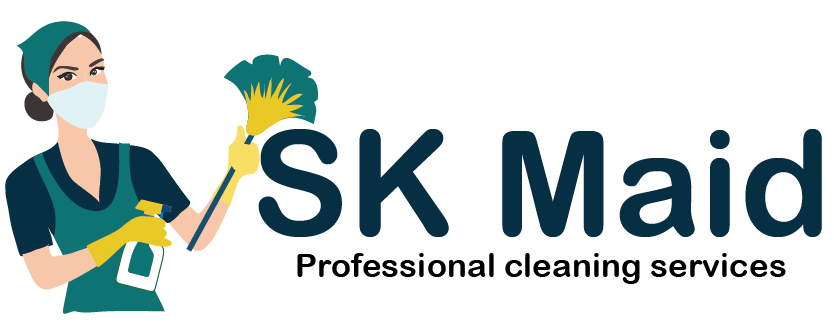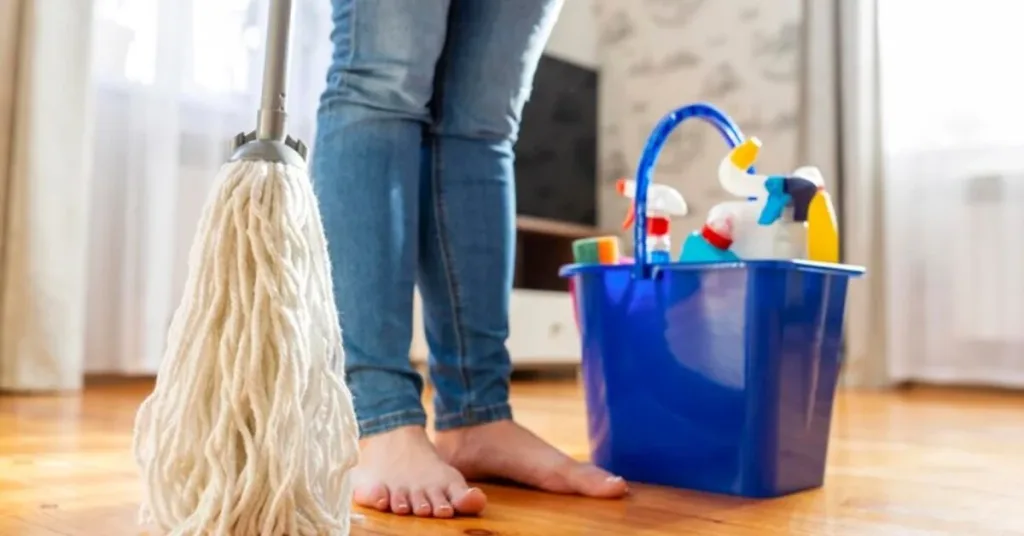Welcome, eager cleaners! Before you dive into cleaning, let’s talk about common Cleaning mistakes to avoid. Using too much cleaner can leave sticky residues, so stick to the recommended amount.
Don’t forget to ventilate while cleaning to avoid overpowering scents. Check your tools for effectiveness; worn-out tools won’t do the job well. Rushing through cleaning can lead to missed spots and burnout, so take your time. By avoiding these mistakes, your home will sparkle like never before. Happy cleaning!
Cleaning your home is essential for a cozy and healthy living space. But did you know that using the wrong cleaning products can do more harm than good? Let’s delve into the importance of selecting the right cleaning products and common mistakes to avoid.
Importance of Using the Right Cleaning Products
Using the right cleaning products is crucial for maintaining the integrity of your surfaces and ensuring effective cleaning. Each surface, whether it’s wood, glass, or tile, requires specific care to avoid damage.
Common Mistakes to Avoid When Selecting Cleaning Products
One common mistake is using multipurpose cleaners for every surface. While convenient, these cleaners may contain harsh chemicals that can damage delicate surfaces like marble or granite. Another mistake is neglecting to read labels properly. Different surfaces require different pH levels and ingredients for optimal cleaning.
Expert Recommendations for Choosing Appropriate Products
To keep wood surfaces clean, use mild cleaners that won’t harm them. For glass and mirrors, mix vinegar and water for streak-free cleaning. When cleaning tile, use a grout-specific cleaner to remove tough stains.
In summary, picking the right cleaning products is crucial for a spotless home. Follow expert advice to avoid mistakes and keep surfaces clean and damage-free. Choose wisely for a home that shines inside and out!
Neglecting regular cleaning maintenance can lead to a buildup of dirt and grime, making it harder to clean in the long run. Let’s explore the consequences of overlooking regular cleaning and some tips for implementing a daily cleaning schedule to maintain a tidy home.

Consequences of Neglecting Regular Maintenance
When you neglect regular cleaning, dust accumulates on surfaces, making them look dull and unappealing. Spills and stains left unattended can become stubborn and difficult to remove. Over time, neglecting cleaning tasks can result in unpleasant odors lingering in your home.
Tips for Implementing a Daily Cleaning Schedule
To keep your home consistently clean, establish a daily cleaning routine. Start by making your bed every morning to set a positive tone for the day. Throughout the day, tidy up as you go, putting away items and wiping down surfaces after use. In the evening, dedicate a few minutes to tasks like sweeping floors and wiping down kitchen counters.
Importance of Consistency in Cleaning Tasks
Keeping your home clean is important. You need to clean every day. This helps stop dirt and mess from building up. It also means you won’t have to clean a lot at once later.
To sum up, if you don’t clean regularly, your home will get dirty and untidy. Make a plan to clean up a little bit every day. This will keep your home nice and clean for you and your guests. Don’t wait until it’s a big mess—clean a little every day!
Using the Right Cleaning Supplies
Cleaning your home is essential for maintaining a healthy environment. However, using the wrong cleaning supplies can lead to more harm than good. Let’s dive into the importance of choosing the appropriate cleaning products and some must-have supplies you should always have on hand.
Importance of Choosing Appropriate Cleaning Products
Selecting the right cleaning products is crucial for effective cleaning without causing damage. Many commercial cleaners contain harsh chemicals that can harm both your health and the surfaces you’re cleaning. These chemicals can leave behind toxic residues and even cause allergic reactions or respiratory issues. Instead, opt for natural or eco-friendly cleaning solutions that are gentle yet effective.
Avoiding Harsh Chemicals That Can Damage Surfaces
Harsh chemicals found in some cleaning products can wreak havoc on various surfaces in your home. They can strip away finishes, discolor fabrics, and even corrode metal surfaces. To avoid this, always read the labels and opt for products that are safe for the specific surfaces you’re cleaning. For example, use mild dish soap or vinegar solutions for delicate surfaces like marble or granite countertops.
Recommended Must-Have Cleaning Supplies
To make cleaning easier, it’s important to have the right supplies. You’ll need things like microfiber cloths for dusting and wiping, a cleaner you can use for different tasks, baking soda to clean tough stains, and vinegar to get rid of smells and germs. Don’t forget gloves to protect your hands and a good mop or vacuum for floors.
In short, picking the right cleaning supplies is key to keeping your home clean and healthy. By using safe products and avoiding harsh chemicals, you can clean effectively without causing any harm. Remember these tips next time you clean to keep your home looking great without any extra trouble.
Not Following a Daily Cleaning Schedule
Cleaning your home regularly is essential, but not having a daily cleaning schedule can lead to chaos. Let’s explore the benefits of establishing a daily cleaning routine and some simple tasks you can incorporate into your busy life.
Benefits of Establishing a Daily Cleaning Routine
Having a daily cleaning routine helps you stay on top of chores and maintain a clean and organized home. It reduces the buildup of dirt and clutter, making weekly cleaning tasks more manageable. Moreover, a tidy home can contribute to your mental well-being by reducing stress and promoting relaxation.
Simple House Cleaning Schedule for Busy Individuals
For busy individuals, finding time to clean can be challenging. However, breaking down tasks into small, manageable chunks can make it easier. Here’s a simple daily cleaning schedule you can follow:
- Morning: Make your bed, wipe down bathroom surfaces, and tidy up the kitchen.
- Afternoon: Sweep or vacuum high-traffic areas and do a quick clutter pick-up.
- Evening: Wash dishes, wipe down kitchen countertops, and put away any items left out.
Incorporating Quick Cleaning Tasks into Daily Activities
You don’t have to set aside large blocks of time for cleaning. Instead, incorporate quick tasks into your daily activities. For example, while waiting for your coffee to brew, wipe down kitchen surfaces. During commercial breaks, while watching TV, fold laundry or tidy up the living room.
In conclusion, not following a daily cleaning schedule can lead to a messy and stressful living environment. By establishing a routine and incorporating quick cleaning tasks into your daily activities, you can maintain a clean and organized home without sacrificing too much time or energy.
Neglecting Kitchen Sponge Hygiene
Your kitchen sponge might seem harmless, but neglecting its hygiene can lead to serious cleanliness issues. Let’s delve into why it’s crucial to keep your kitchen sponge clean, how to sanitize it effectively, and some tips for extending its lifespan.
Understanding the Importance of Clean Kitchen Sponges
Dirty kitchen sponges carry lots of germs, which can make you sick. When you use a dirty sponge to clean, you spread germs around. Keeping your sponge clean is crucial for a safe kitchen.
How to Clean and Sanitize Kitchen Sponges Effectively
To clean your kitchen sponge effectively, start by rinsing it thoroughly with hot water after each use to remove food particles and debris. Next, soak the sponge in a solution of water and bleach or vinegar for at least five minutes to kill bacteria. Alternatively, you can microwave a damp sponge on high for one minute to achieve the same result. Allow the sponge to air dry completely before using it again.
Tips for Extending the Lifespan of Kitchen Sponges
To keep your kitchen sponge fresh, switch between a couple of sponges and change them often, about every two weeks. Don’t clean raw meat or other risky stuff with sponges to avoid germs. Also, put your sponge where air can get to it to stop mold.
In the end, if you ignore your sponge’s cleanliness, it could make you sick and your kitchen messy. By knowing why it’s crucial to keep things clean, cleaning things right, and keeping your sponge in good shape, you’ll keep your kitchen safe for you and your family.
Overlooking High-Touch Surfaces
When it comes to cleaning, it’s easy to overlook high-touch surfaces, but doing so can pose health risks. Let’s explore the commonly overlooked high-touch areas, the importance of regularly disinfecting them, and how to incorporate this cleaning into your daily routine.
Identifying Commonly Overlooked High-Touch Surfaces
High-touch surfaces are areas in your home that are frequently touched by multiple people, making them hotspots for germs and bacteria. Some commonly overlooked high-touch surfaces include doorknobs, light switches, remote controls, and faucet handles. These areas often harbor germs that can spread illness if not properly cleaned.
Importance of Regularly Disinfecting High-Touch Areas
Regularly disinfecting high-touch surfaces is crucial for preventing the spread of illness and maintaining a clean environment. Germs can linger on these surfaces for hours or even days, making it easy for them to transfer to your hands and then to your face, leading to infections. By disinfecting these areas regularly, you can reduce the risk of illness and promote a healthier living space.
Incorporating High-Touch Surface Cleaning into Daily Routine
Make sure to clean high-touch spots every day. Spend a few minutes wiping these areas with disinfectant wipes or a mix of water and bleach. Focus on places lots of people touch, like doorknobs, light switches, and countertops. Cleaning these spots daily helps stop germs from spreading and keeps your home clean and safe.
In summary, forgetting to clean high-touch areas is a common mistake that can hurt your health. Find these spots, see why cleaning them matters, and make it part of your daily routine. This way, you’ll make your home safer and healthier for you and your family.
Rushing Through Cleaning Tasks
When it comes to cleaning, taking your time is key. Rushing through cleaning tasks can lead to a myriad of problems. Let’s delve into the negative consequences of rushing, the importance of thorough cleaning techniques, and some tips for staying focused and efficient during cleaning.
Negative Consequences of Rushing Through Cleaning
Rushing through cleaning tasks can result in incomplete or subpar cleaning. You may miss spots or fail to remove dirt and grime effectively. Additionally, rushing increases the risk of accidents or injuries, such as slipping on wet floors or knocking over objects.
Importance of Thorough Cleaning Techniques
Thorough cleaning techniques ensure that your home is not only clean but also safe and healthy. Taking the time to clean removes germs, allergens, and other contaminants, reducing the risk of illness and promoting a hygienic living environment for you and your family.
Tips for Staying Focused and Efficient During Cleaning
To make cleaning easier, break tasks into small steps. Start with one room and finish before moving on. Use a list to keep track and do important tasks first.
Also, avoid distractions by turning off electronics. Set aside time just for cleaning. Take breaks if you need them, but don’t get off track.
In the end, rushing cleaning leads to problems. It means things won’t be clean and accidents can happen. By cleaning well and staying focused, your home will be safe and healthy.
Not Having a House Cleaning Planner
Having a house cleaning planner might seem unnecessary, but it can make a world of difference in keeping your home clean and organized. Let’s explore the benefits of using a house cleaning planner, how to create a customized cleaning schedule and checklist, and some tools and apps for organizing cleaning tasks.
Benefits of Using a House Cleaning Planner
A house cleaning planner helps you stay organized and ensures that no cleaning task goes overlooked. It allows you to schedule cleaning tasks based on your preferences and priorities, making it easier to maintain a clean and tidy home. Additionally, a planner can help you track your progress and stay motivated to keep up with your cleaning routine.
Creating a Customized Cleaning Schedule and Checklist
To create a customized cleaning schedule and checklist, start by assessing your cleaning needs and preferences. Determine which tasks need to be done daily, weekly, and monthly, and allocate time for each accordingly. Consider factors such as the size of your home, the number of occupants, and any specific cleaning challenges you may face.
Tools and Apps for Organizing Cleaning Tasks
To keep your home tidy, you can use helpful tools and apps. These tools help you make a plan for cleaning your house. They remind you when it’s time to clean and track what you’ve done. Some people like using cleaning apps because they let you make your own cleaning schedule.
You can also use a digital calendar or a regular planner to plan when you’ll clean. This helps you remember what needs to get done and when.
In short, not having a plan for cleaning your house is a common mistake. If you use a planner, you can keep your house clean and make sure you don’t forget any tasks. This way, your home will always be clean and welcoming for you and your family.
Skipping Deep Cleaning Sessions
Skipping deep cleaning sessions might seem like a time-saver, but it can lead to a buildup of dirt and grime in your home. Let’s discuss the importance of deep cleaning for maintaining a tidy home, the recommended frequency for deep cleaning different areas, and some tips for tackling deep cleaning tasks efficiently.
Importance of Deep Cleaning for Maintaining a Tidy Home
Deep cleaning goes beyond the surface and targets hidden dirt and germs that regular cleaning may miss. It helps maintain a healthy living environment by removing allergens, bacteria, and other contaminants. Deep cleaning also prolongs the lifespan of your furniture and appliances, saving you money in the long run.
Recommended Frequency for Deep Cleaning Different Areas
The frequency of deep cleaning depends on various factors such as household size, lifestyle, and level of foot traffic. However, as a general rule, it’s recommended to deep clean high-traffic areas such as kitchens and bathrooms every 1-3 months. Less frequently used areas like guest rooms and basements may only require deep cleaning every 6 months to a year.
Tips for Tackling Deep Cleaning Tasks Efficiently
To clean really well, do small parts at a time. First, tidy up to make cleaning easier. Use the right stuff for each surface. Start from the top and go down to keep things clean. Take breaks when you need to and reward yourself for finishing each part.
In short, not cleaning well is a big mistake. It makes your home dirty and not good for you. Understand why cleaning well matters. Clean like you should and use good ways to clean. That way, your home will be nice and clean for you and your family.
Ignoring Proper Cleaning Techniques
Proper cleaning techniques are crucial for achieving effective and safe cleaning results. Let’s explore some common mistakes in cleaning techniques, the importance of using correct methods for different surfaces, and tips for learning and implementing proper cleaning techniques.
Common Mistakes in Cleaning Techniques
Using too many cleaning products is a common mistake. It leaves behind residue and streaks. Also, not rinsing surfaces well after cleaning leads to soap buildup. Another mistake is using abrasive tools on delicate surfaces. This can cause damage. Don’t forget to follow the manufacturer’s instructions for cleaning products. Doing so ensures effective cleaning.
Importance of Using Correct Cleaning Methods for Different Surfaces
It’s important to use the right cleaning methods for different surfaces. This helps prevent damage and gets the best cleaning results. For example, don’t use rough cleaners on delicate surfaces like marble or stainless steel. Instead, use gentle cleaners and soft cloths. This prevents scratching or dulling the surface.
Similarly, using strong chemicals on hardwood floors can harm them. It’s best to use cleaners made for wood surfaces. This prevents stripping away the finish. By following these tips, you can keep your surfaces clean and damage-free.
Tips for Learning and Implementing Proper Cleaning Techniques
For good cleaning tips, ask pros or look online. Clean different things how they say, using good tools. Take your time, pay close attention, and ask if you need help. That’s how you learn.
Not Decluttering Regularly
Regular decluttering is essential for maintaining a clean and organized home. Let’s explore the connection between clutter and cleanliness, the benefits of decluttering regularly, and some strategies for decluttering and organizing belongings.
Connection Between Clutter and Cleanliness
Clutter can make it challenging to clean effectively. Dust and dirt accumulate more easily in cluttered spaces, making it harder to reach surfaces for cleaning. Additionally, clutter can hide spills and stains, leading to unpleasant odors and potential health hazards.
Benefits of Decluttering Regularly
Decluttering regularly not only improves the cleanliness of your home but also has numerous other benefits. It reduces stress by creating a more peaceful and organized living environment. Decluttering also saves time and money by making it easier to find and access items when needed. Moreover, it can improve mental clarity and focus by eliminating distractions and creating space for relaxation.
Strategies for Decluttering and Organizing Belongings
Start by tackling one area at a time, such as a room or a specific category of items. Sort belongings into categories like keep, donate, or discard, and be ruthless in deciding what to keep. Consider whether each item serves a purpose or brings you joy. Use storage solutions like bins, baskets, and shelves to organize belongings and keep clutter at bay. Make decluttering a regular part of your routine by setting aside time each week or month to tidy up and eliminate excess belongings.
Forgetting to Clean Behind Furniture and Appliances
Cleaning behind furniture and appliances is often overlooked but is crucial for maintaining a truly clean home. Let’s explore the importance of cleaning hidden areas, tips for reaching and cleaning behind furniture and appliances, and how to incorporate hidden area cleaning into your regular cleaning routine.
Importance of Cleaning Hidden Areas in the Home
Hidden areas like behind furniture and appliances accumulate dust, dirt, and debris over time. Neglecting these areas can lead to poor indoor air quality, unpleasant odors, and even pest infestations. Cleaning hidden areas regularly helps prevent these issues and ensures a thorough cleaning of your home.
Tips for Reaching and Cleaning Behind Furniture and Appliances
To clean behind furniture and appliances effectively, start by moving them away from the wall or out of their usual position. Use a vacuum cleaner with a hose attachment to remove dust and debris from the floor and surrounding area. For hard-to-reach spots, use a microfiber cloth or duster to wipe down surfaces. Don’t forget to clean the backs and bottoms of furniture and appliances as well.
Incorporating Hidden Area Cleaning into Regular Cleaning Routine
Make cleaning behind furniture and appliances a part of your regular cleaning routine by scheduling it on a monthly or quarterly basis. Set reminders on your calendar or smartphone to ensure you don’t forget. Consider rotating furniture and appliances periodically to access all hidden areas and prevent buildup.

Conclusion: Keeping Your Home Clean and Healthy
Keeping your home clean is important for a healthy and cozy living space. By avoiding common cleaning mistakes, you can make sure your cleaning efforts work well.
Not cleaning surfaces people touch a lot can spread germs. Using the wrong cleaning methods might not clean well and could harm surfaces. Also, not doing deep cleaning often can let dirt build up, making your home less clean.
Remembering to tidy up regularly is key for a neat home and less stress. Forgetting to clean behind furniture and appliances can hide dirt and mess, making the air inside not so clean.
To avoid these mistakes, it’s good to have a regular cleaning plan. Use the right cleaning stuff and tools for different things. And don’t forget to clean spots people touch a lot and hidden spots often.
Following these tips and being careful about common cleaning mistakes can help keep your home clean, healthy, and nice for you and your family. Let’s start doing these things today to make our homes cleaner and happier places!

